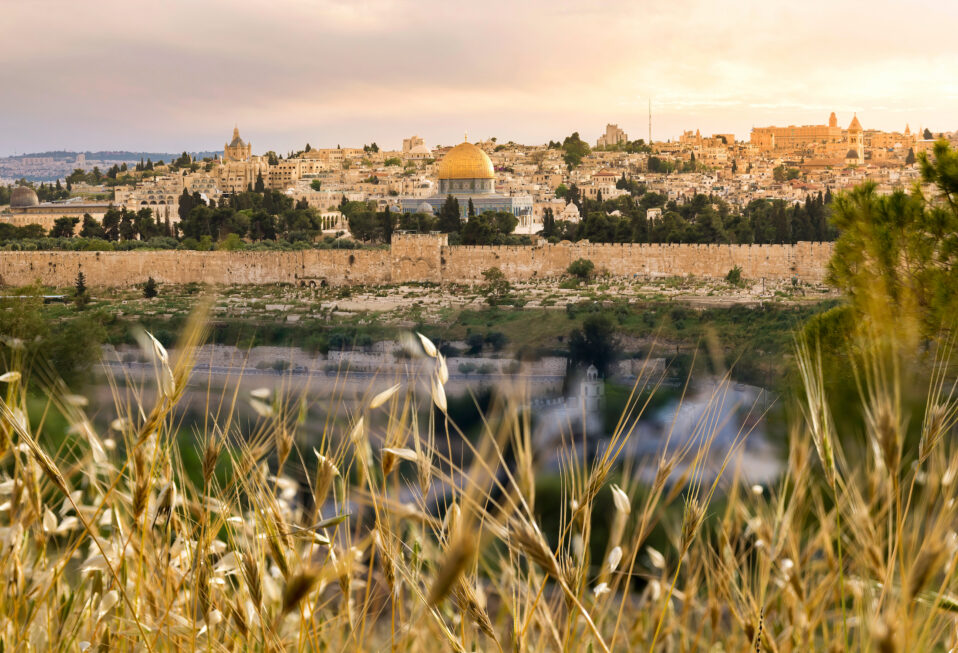By Julie Stahl
God commanded the Jewish people to come up to Jerusalem three times a year. One of those occasions is for Shavuot.
“Three times a year all your males shall appear before the LORD your God in the place which He chooses: at the Feast of Unleavened Bread, at the Feast of Weeks, and at the Feast of Tabernacles; and they shall not appear before the Lord empty-handed” (Deuteronomy 16:16).
And in Exodus 34:22 we read, “You shall observe the Feast of Weeks, the firstfruits of wheat harvest, and the Feast of Ingathering at the year’s end.”
The New Testament records that Jews were gathered in Jerusalem when the Holy Spirit was poured out on Pentecost.
“When the Day of Pentecost had fully come, they were all with one accord in one place. And suddenly there came a sound from heaven, as of a rushing mighty wind, and it filled the whole house where they were sitting. Then there appeared to them divided tongues, as of fire, and one sat upon each of them. And they were all filled with the Holy Spirit and began to speak with other tongues, as the Spirit gave them utterance” (Acts 2:1-4).
What’s the connection between God giving the Law to Moses and pouring out His Holy Spirit? Both are celebrated on the biblical Feast of Weeks or Shavuot, known in the New Testament as Pentecost.
This year, the two holidays are celebrated a month apart. About seven times every 19 years, a second lunar month of Adar is added to the Jewish calendar to keep the year more or less in sync with the solar calendar—much the same way a day is added to February every four years. That’s why this year, Pentecost was in May and Shavuot is in June.
Fifty days (about seven weeks) after Passover, the Jewish people celebrate Shavuot (“weeks” in Hebrew), also known as the Feast or Festival of Weeks. In the same way, Christians celebrate Pentecost (“50 days” in Greek).
Many Jewish people stay up all night on Shavuot to study the Scriptures. Before dawn, those in Jerusalem head to the Western Wall on foot where they pray and bless God. The Ten Commandments are read, and in many communities, the book of Ruth is also read.
According to Jewish tradition, it was on Shavuot that God called Moses up to Mount Sinai and gave him the Law—the two tablets on which the Ten Commandments were written, as well as the entire Torah.
“There are so many beautiful parallels that take place for Shavuot,” said Boaz Michael, founder of First Fruits of Zion. “Imagine Mount Sinai with the mountains above it, the covenant given to the people of Israel. This reminds us of a chuppah (canopy) over a bride and a groom. It tells us that God is making a covenant with His bride, Israel. There’s a marriage that takes place.”
Michael told CBN News: “Shavuot is a celebration of the giving of the commandments, but more than that—we’ve been redeemed from Egypt. We’ve wandered through the wilderness. We’ve come to Mount Sinai, and we enter into an intimate relationship with God through the giving of His commandments and then the covenant that He gives to us, the Torah, at Mount Sinai.”
He further explained, “That links us to Acts 1:8, where tells His disciples to take His message to Jerusalem, Judea, and Samaria and to all the ends of the earth.”
Julie Stahl is a correspondent for CBN News in the Middle East. A Hebrew speaker, she has been covering news in Israel full-time for more than 20 years. Julie’s life as a journalist has been intertwined with CBN—first as a graduate student in Journalism at Regent University; then as a journalist with Middle East Television (METV) when it was owned by CBN from 1989-91; and now with the Middle East Bureau of CBN News in Jerusalem since 2009. She is also an integral part of CBN News’ award-winning show, Jerusalem Dateline, a weekly news program providing a biblical and prophetic perspective to what is happening in Israel and the Middle East.




Post a comment